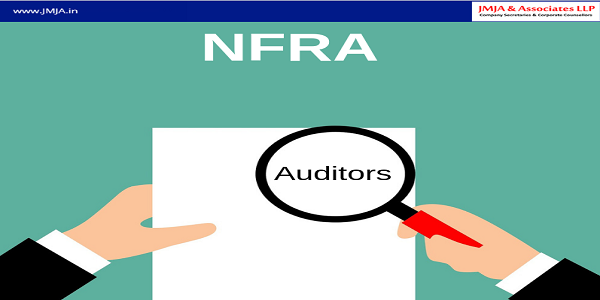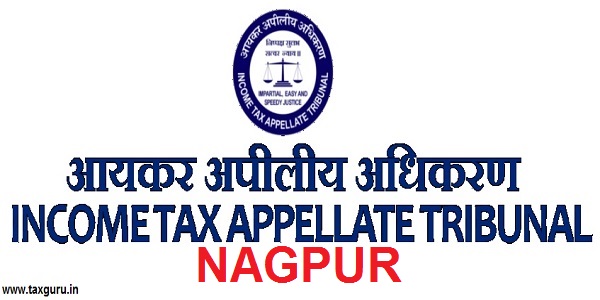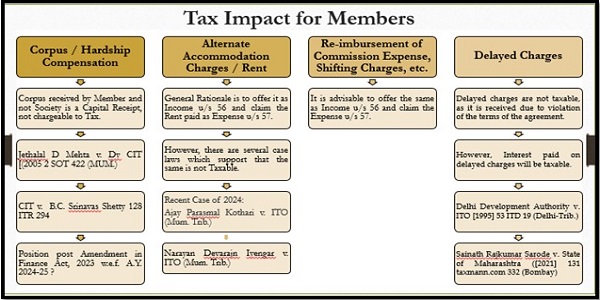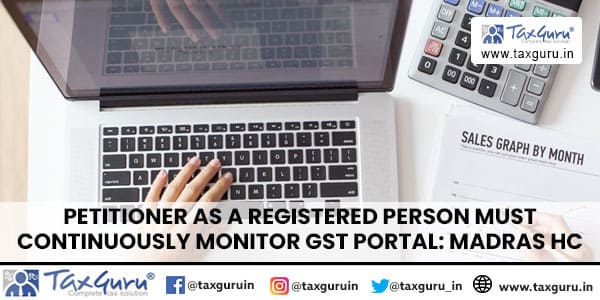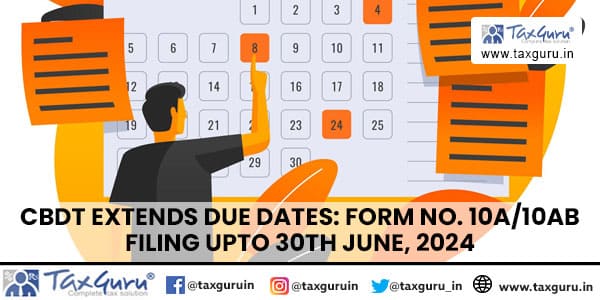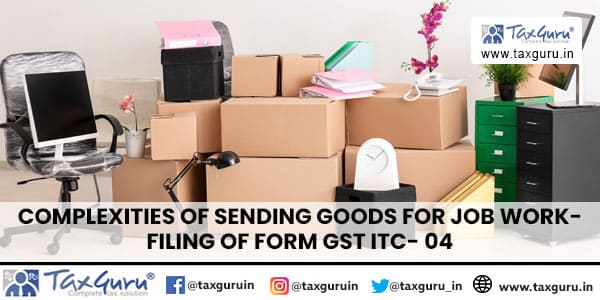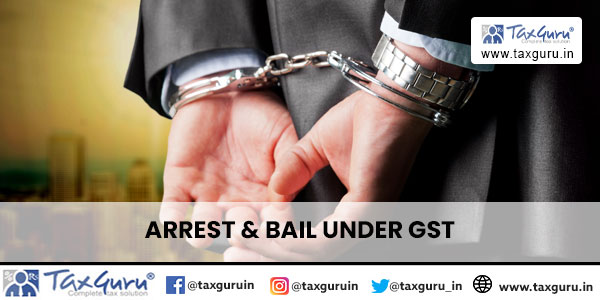Case Law Details
AO bound to demonstrate that the assessee has failed to disclose material facts fully and truly which has resulted in escapement of income. If he fails to demonstrate this aspect, then, in the case where scrutiny assessment has been made and four years have expired, he cannot take action under section 147 of the Income Tax Act.
The ld.DR relied upon the order of the AO and submitted that the ld.AO has rightly recorded reasons that the assessee has claimed excessive short term capital loss which was not admissible to the assessee. On the other hand, the ld.counsel for the assessee contended that this issue was examined by the AO in the original assessment proceedings, and after due application of mind, he accepted the claim of the assessee. The ld.counsel for the assessee drew our attention towards page no.3 9 of the paper book where the copy of the original assessment order dated 27.11.2006 passed under section 143(3) of the Act has been placed on record.
We have duly considered rival contentions and gone through the record carefully. The assessment year involved herein is Asstt.Year 2004-05. The assessment in the first round was made under section 143(3) on 27.11.2006. A notice under section 148 of the Act has been issued after 25.10.2010 i.e. the AO has recorded reasons on 25.10.2010, meaning thereby, notice under section 148 of the Act was issued after expiry of four years from the end of the relevant assessment year i.e. Asstt.Year 2004-05. Section 147 of the Income Tax Act contemplates that if the AO has reason to believe that no income chargeable to tax has escaped assessment for any assessment year, he may subject to proviso of sections 148 to 153 assess or re-assess such income, and also any other income chargeable to tax, which has escaped assessment and which comes to his notice subsequently……………. Proviso appended to section 147 puts an embargo upon the powers of the AO for reopening of the assessment in case where an assessment was made under section 143(3) of the Income Tax Act for relevant assessment year and four years have expired from the end of the assessment year. In such cases, no action shall be taken under section 147 unless it is established that income chargeable to tax has escaped on account of failure of the assessee to disclose fully and truly all the material facts necessary for his assessment. Thus the AO was bound to demonstrate that the assessee has failed to disclose material facts fully and truly which has resulted escapement of income. If he fails to demonstrate this aspect, then, in the case where scrutiny assessment has been made and four years have expired, he cannot take action under section 147 of the Income Tax Act. A perusal of the reasons (extracted supra) would indicate that the AO has nowhere demonstrated this fact. Apart from the above, a perusal of the assessment order passed under section 143(3) would indicate that all these facts have duly been considered and the AO has accepted the stand of the assessee. The finding recorded by the AO in the original assessment order is worth to note. It reads as under:
“4. During the year under consideration the assessee has shown total Long Term Capital Gain of Rs.58,76,830/- and has shown a short term capital loss of Rs.26,44,800/-. Thus totaling net Long Term Capital Gain Rs.32,32,030/-. After setting off by the last year capital gain of Rs.6,21,547/- but assessee has shown total capital gain of Rs.26,10,483/- for taxation. The assessee was asked to explain the reason for such a huge loss and the reasons why he needed to sale of such stock during the year. The assessee vide his letter dated 17-10- 2006 has stated that :–
1. Our above named client Shri S. Venkataraman lyer was a Director and Share Holder of M/s. Manish Packaging Pvt. Ltd., M/s. Vikas Metalizers Pvt. Ltd. and M/s. Manish Multi Packfilms Pvt. Ltd. In these companies, he himself and his family members were holding about 25% shares whereas the majority share holding in all these companies were held by Patel family group. Our client family was also having shares in different partnership firms with 25% share and the said Patel family was having 75% share. During the conduct of the affairs of the companies and partnership firms some differences had arisen and therefore, they decided to separate on settlement of accounts. It is quite obvious that our client and his family members were in minority and therefore they had very little y on terms and conditions of settlement.
In terms of the settlement agreement, it was decided mutually that our client and his family members would transfer the share holdings in the company on the basis of intrinsic value of share as on the last date of Audited Balance Sheet i.e. as on 31st March 2003. Accordingly, our client had transferred the shares of different companies at the following rates.
Manish Packaging Pvt. Ltd. at Rs. 40/= per equity share
Vikas Metalizers Pvt. Ltd. at Rs. 6/- per equity share
Manish Multi Packfilms Pvt. Ltd. at Rs. 1.30ps. per equity share
2. M/s.Manish Packaging Pvt. Ltd. was the pivotal company and running business since last many years and having good reserves and surplus and therefore, the valuation of share was at a higher rate. M/s. Vikas Metalizers Pvt. Ltd. was running in losses during last so many years and there was a huge amount of accumulated losses of earlier years and the business potentiality was also not so bright and therefore, our client had to sell the shares at Rs. 6/= per share. In case of M/s. Manish Multi Packfilms Pvt, ltd. the investments were already made but, the project could not be commissioned due to technical reasons and there were no chance of commissioning the project in recent future and the prospects of the business were very poor. Moreover, there were the chances of incurring huge loss in the said project and our client had envisaged the said fact and decided to transfer the share as per agreed rate. It is respectfully submitted that since our client was a minority share holder in a Company and the dispute had arisen amongst the two groups and therefore, our client had no alternative but to quit in as much as it was felt by him that otherwise in future he would not fetch this value. Moreover, the huge amount of deposit in form of unsecured loans with the companies as well as Capital balance and loans in various partnership firms were also stuck up and therefore, our client had to agree with the terms of settlement and the offered price of equity shares of the companies. Thus it was a kind of distressed sale. The entire settlement of partition was made in terms of a Memorandum of Understanding made by the two groups and the same was made as per the terms and conditions of the said MOU. Accordingly, our client had actually received the sale consideration for transfer of shares as per the agreed price between both the parties.
3. Thus your honour will appreciate that our client had to sell the shares as per the prevailing circumstances and out of commercial expediency and the value of shares was determined as per the method as recognized by the Institute of Chartered Accountants of India and after considering the correct, just and fair and agreed value by both the groups and approved by the auditors of the Companies. Under these circumstances our client had incurred capital loss in M/s. Manish Multi Packfilms Pvt. Ltd. A copy of Memorandum of Undertaking is enclosed for your ready reference. We have also enclosed a statement showing calculation of valuation %f shares and Audited Accounts of different companies for your kind perusal.
4. It is respectfully submitted that our above named client had shown fulll value of consideration in respect of transfer of shares and actually received the amount as shown in the return of income. There were certain special circumstances under which the value of shares were determined by both the croups re- amicable settlement of partition in the business and trie value was arrived at after considering different factors. Here the opinion of Hon ‘ble Supreme Court in K.P. Varghese Vs. ITO [131 ITR 597] is quite relevant wherein it was observed that it is a well settled rule of law that the onus of establishing that the conditions of taxability are fulfilled is always on the Revenue and the burden lies on the revenue to show that there is an understatement of the consideration. Moreover to throw the burden of showing that there is no understatement of consideration on the assessee would be to cast an almost an impossible burden upon him to establish a negative, namely, that he did not receive any consideration beyond that declared by him. It is well recognized rule of construction that a statutory provision must be so construed, if possible, that absurdity and mischief may be avoided. It would indeed be most harsh and inequitable to tax the assessee on income which is neither arisen to him nor is received by him.
It is further submitted that in the case of our client the actual sale consideration received by him is well supported by documentary evidence in form of an agreement between two groups and it clearly shown that the value of shares which was actually received by our client is fully disclosed in the return of income. Therefore there is no reason to presume that the sale consideration is not properly shown by him. It was a commercial expediency and needs and circumstances of the assessee which compelled him to transfer all his interest in the business for which he received a consideration which was reasonable according to him under the than prevailing circumstances and the same was disclosed by him in the return of income.
I have considered the submission made by the assessee and after going though a copy of the MOD which is placed on record, it appears that the reasons stated by the assessee’s A.R appears to true and the assessee has sold the shares in distress and thus has incurred a loss which has been set off against the long term capital gain. Further, the calculation of value of shares has been determined as per the balance sheet submitted by the assessee and as per accounting norms set by the Chartered Account’s Association of India.”






